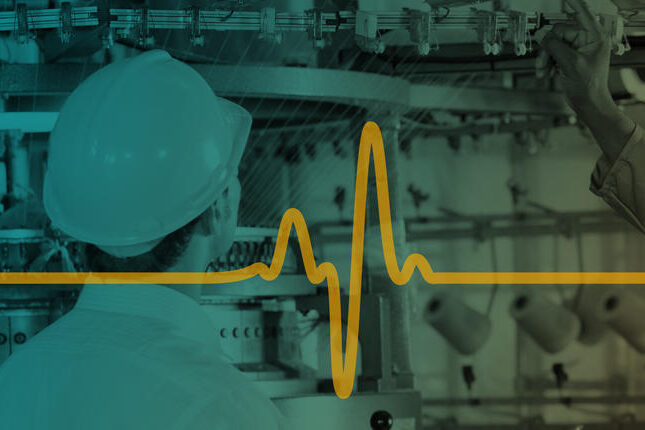The Case of Techno-Optimists
Report Home // History of Innovation // Oregon’s Story // Techno-Optimists // Techno-Pessimists // Companies Automating // What it All Means
Disruptions of our physical world will extend well beyond robots and factories
Images of robots in the automobile industry — robotic arms tightening parts, installing windshields — have been ingrained in our collective memories. General Motors experimented with robotic welders as early as 1961. Stanford University and The Massachusetts Institute of Technology (MIT) greatly improved the functionality of robotic arms in the late 1960s and 1970s. Since then, automakers and other manufacturers have invested billions of dollars to automate routine assembly work. Underlying the rapid advancement of robotics in manufacturing is a concept known as “environmental control.” Manufacturers designed their factories to accommodate robots. The factory setting was rigorously documented. Robots worked within the highly controlled settings and were never surprised by changing conditions.
Now technology is impacting the physical world all around us. The highly precise digitized maps, which are deployed in smartphones and serve as the foundation of ride-sharing apps, are an early example of taking environmental control out of the factory and into our neighborhoods, cities and rural areas. As techno-optimists successfully document all the details of an area’s physical environment, that creates automation opportunities. Long stretches of highways are easier to document than complex city centers, so truck drivers should expect disruption before Uber and Lyft drivers do. As evidence, the startup company Otto delivered 50,000 beers with an autonomous truck in 2016; but techno-optimists say passenger vehicles won’t be far behind. Carmakers, ride-sharing services and technology firms are locked in a race to bring autonomous cars to complex urban settings, while some luxury-car drivers already are experimenting on their own.
Disruption of the physical world is not limited to autonomous vehicles. Robots have transformed from the 1970s-era factory arms to mobile entities that can operate on complex terrain. Oregon State University’s two-legged “Cassie” robot runs, walks and sits, and one day could help first responders evaluate and deliver aid to disaster settings. The list goes on. Amazon has signaled a future of drone-aided deliveries. Former Intel futurist Steve Brown envisions delivery robots spilling out of the back of trucks and rolling up to front porches. Wearable technology, 3D printers and the “Internet of Things” will bring other disruptions.
Digital disruptions will press further into what we considered uniquely human tasks
The advent of computing, and the impact of Moore’s Law on our ever-accelerating ability to store, manage, process and analyze data, has already transformed every occupation over the past 50 years. Personal computers, word processing and analytic software, internet services, the computing cloud and smartphones have made workers more productive while increasing skill demands. The Brookings Institution recently quantified the pace of digitization of American jobs and found those with high or medium digital content — those that require a knowledge of computers and electronics, and work activities that require interacting with computers — increased, while those requiring low digital content fell from 56 to 30 percent. In short, computers and software are everywhere: Car repair shops, construction worksites, hospitals, courtrooms, banks, etc.
Techno-optimists argue that we’ve seen nothing yet, despite impressive advances in machine learning and artificial intelligence (AI) that is triggering the next wave of automation. The rapid improvement in Google Translate’s quality, driven by a machine-learning algorithm, provides a hint of what is to come. In one well-documented example, a Japanese professor wrote his interpretation of Ernest Hemingway’s opening to the “The Snows of Kilimanjaro” in Japanese and had Google translate it back into English. The differences between the Google translation and the original Hemingway were minor. More telling, though, was that the translation’s quality was much better than it had been just one day before.
To get a better handle on possible impacts of artificial intelligence (AI) on modern life, a team of researchers at Oxford and Yale universities surveyed 352 AI experts from across the world and asked them to predict when AI would outperform humans on a range of tasks. Their findings: AI could outperform humans in language translation by 2024; high-school essay writing by 2026; truck driving by 2027; retail activities by 2031; writing a best-selling book by 2049; and surgery by 2053. The respondents saw a 50 percent chance that AI could outperform humans on all tasks within 45 years and could automate all jobs in 120 years. Asian survey respondents expected much shorter time horizons than North American respondents.
Physical and digital disruptions by technology put 47 percent of U.S. occupations at high-risk of automation
As mentioned in Oregon’s Story, two Oxford University engineers followed a similar line of inquiry by assessing the risk of computerization across specific U.S. occupations. Their analysis identified tasks where social and creative intelligence, or perception and manipulation are required — those occupations with a low dependence on those skills — were identified as being at high-risk of automation. Transportation has already begun to see investments in physical disruptions in the form of autonomous vehicles, and sales work has seen digital disruptions through the reduction in reliance on brick-and-mortar retail locations and an increased focus on online shopping.
This study’s automation risk assessment suggests a potential for future disruptions — whether bigger or smaller than those happening today or on the horizon — that will likely effect how most industries do work.
